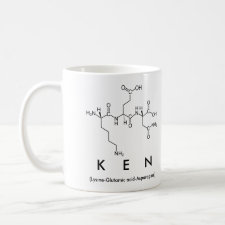
Authors: Zhang YG, Song D, Brown JC, Shimizu KD
Article Title: Suppression of background sites in molecularly imprinted polymers via urea-urea monomer aggregation.
Publication date: 2011
Journal: Organic & Biomolecular Chemistry
Volume: 9
Issue: (1)
Page numbers: 120-126.
DOI: 10.1039/C0OB00637H
Abstract: The molecular imprinting process provides a synthetically efficient route to polymers with tailored recognition properties. However, the binding properties of the templated binding sites are often masked by the more prevalent background binding sites. Therefore, a strategy for reducing the number of background binding sites was developed and evaluated that uses functional monomer aggregation to suppress the formation of background sites. A series of imprinted and non-imprinted polymers was formed using crosslinking urea monomer and were evaluated for their ability to rebind the anionic template, tetrabutylammonium diphenyl phosphate (TBA-DPP). The urea monomer was shown to form linear hydrogen bonded aggregates in solution and in the solid state. Functional monomer aggregation in the polymerization solution was shown to dramatically reduce the numbers of background binding sites by occupying and blocking the urea recognition groups that were not bound to the template molecule. Despite the low aggregation constant of the urea monomer (3.5 M-1 in chloroform), the number of background sites was reduced by more than 60%. We predict that this strategy of using monomers that aggregate to reduce background binding sites is a general one for MIPs and other types of polymers with tailored recognition properties. The key is to identify self-assembling monomers where the guest binding processes are stronger than the aggregation processes
Template and target information: tetrabutylammonium diphenyl phosphate, TBA-DPP



Join the Society for Molecular Imprinting

New items RSS feed
Sign-up for e-mail updates:
Choose between receiving an occasional newsletter or more frequent e-mail alerts.
Click here to go to the sign-up page.
Is your name elemental or peptidic? Enter your name and find out by clicking either of the buttons below!
Other products you may like:
 MIPdatabase
MIPdatabase









